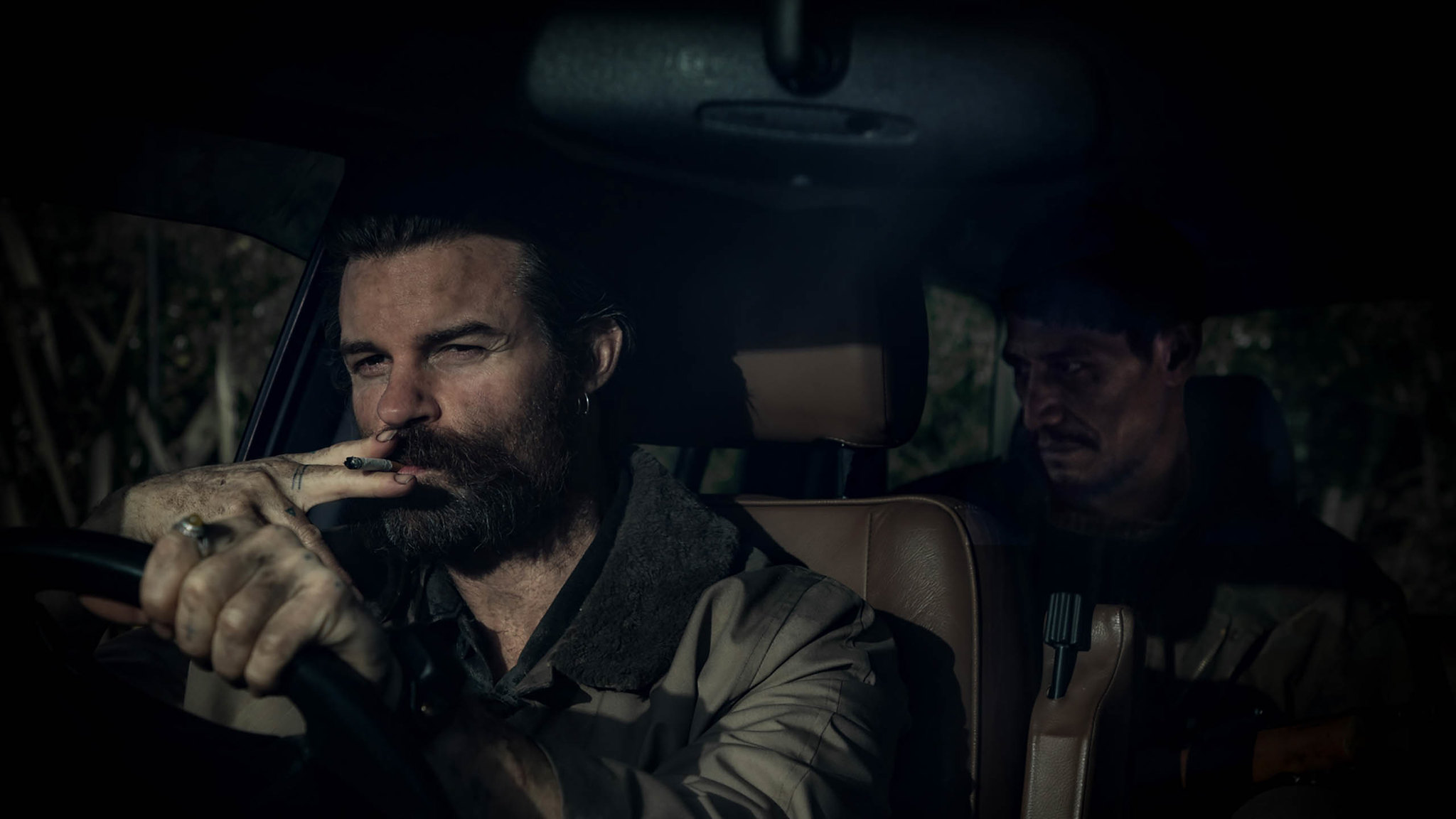In rural New Zealand, Hoaggie (Erik Thomson) rides in the passenger seat. His wife, Jill (Miriama McDowell), is driving and their sons Maika (Billy Paratene) and Jordan (Frankie Paratene) are in the back. It’s the middle of nowhere in New Zealand: scenic, sure, but totally isolated. It’s a good place for a family picnic too, and it fits the bill for a few minutes. That’s when a greasy dude named Mandrake (Daniel Gillies) and his mute lackey, Tubs (Matthias Luafutu), show up. Mandrake seems to know that Hoaggie is a teacher, and he seems a little too laid back as he attacks the family with pure, unhinged sadism. The fact that he goes on to take the family for an all-night joyride from hell is just a way to salt the wounds.
For a while, Coming Home in the Dark works because it doesn’t just lean into the brutality. It’s as brutal as its villains and doesn’t seem to completely make sense. There’s a fine line between senseless violence and violence that’s impossible to understand, and James Ashcroft’s feature debut knows the difference. That’s why it works when it does. Yes, when it does. The skill is here and it comes to fruition in the first 50 minutes, but it’s when it tries to interrogate the motives at hand that it starts to wobble. By the time it tries to say something about culpability and morality, it’s out of its depth.
Ashcroft, who wrote the script with Eli Kent, based the film on Owen Marshall’s short story of the same name. For a while, it’s not obvious; it’s too brisk and lasered in. The first 30 minutes or so are stripped down to raw, thrashing pain. John Gibson’s score is distended and gravelly, enough so that it sounds like someone trying to hold their cries in their throat. The violence is brutal at points, but Ashcroft doesn’t fall into exploitation, balancing onscreen harm with only showing the aftermath. It’s really quite hard to watch at points.
However, the issue comes with the script’s attempts at finding a deeper meaning. From what Mandrake knows about Hoaggie’s profession and past, it’s clear early on that Coming Home in the Dark operates somewhere in the vicinity of a revenge tale. To what degree isn’t clear. That opaqueness is what works, but not the entire movie is like that. It goes deeper into the background of those involved, which is understandable, and the ways it conveys that information is serviceable if not particularly satisfying.
By that point, it still works. Then Ashcroft & Kent try to pose a moral quandary to the audience. If what the film comes to reveal is true, how does that muddy the waters of what we’ve seen? With what we learn about the assailants and who they are apart from their crimes, does that return the situation to more black and white territory? The problem is that the movie doesn’t seem too engaged in or even cognizant of the latter question. It starts to feel sloppy. Then it starts to feel drawn out.
Coming Home in the Dark is only an hour and a half, but becomes repetitive enough in the last third to slow the pace down, and its final moments aren’t all that satisfying. Set pieces vary enough to help keep the jaunt engaging to a degree, but not entirely. The scenes where it felt like a bare-bones thriller feel far away; they also feel like they were in a different movie. Ashford has potential and it’s worth looking out for what he does next, but hopefully, his next project will be more complete.
Coming Home in the Dark premiered at Sundance Film Festival.

